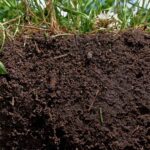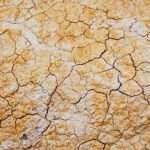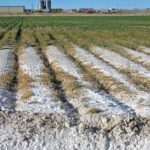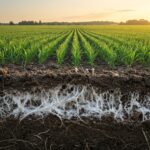In the complex tapestry of soil types, **saline-sodic soils** present a particularly challenging hurdle for agriculture. These soils combine the adverse characteristics of saline soils (high concentration of soluble salts) and sodic soils (excess exchangeable sodium), creating a hostile environment for the growth of most plants. Understanding the dual nature of these soils is fundamental for implementing effective management strategies. In this article, we will explore in detail what saline-sodic soils are, how they originate, the problems they pose for agriculture, and the tactics for their recovery.
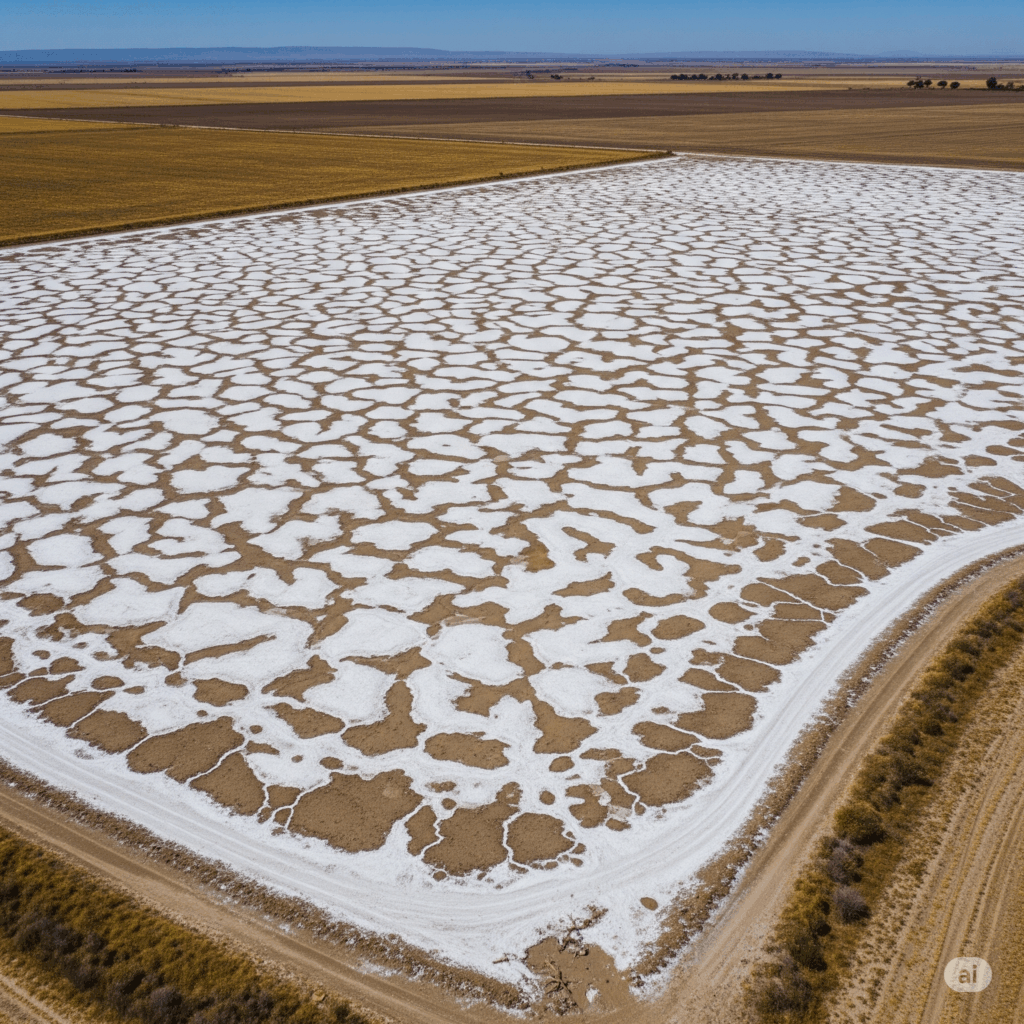
What are Saline-Sodic Soils?
**Saline-sodic soils** are defined by the coexistence of a high concentration of soluble salts (electrical conductivity > 4 dS/m) and a high exchangeable sodium percentage (ESP > 15%). Unlike saline soils, where soil structure tends to be maintained due to flocculation induced by high salt concentrations, in saline-sodic soils, the dispersing effect of sodium can manifest once the salt concentration decreases due to irrigation or rain. Their pH is usually less than 8.5, unlike typical sodic soils which have a more alkaline pH.
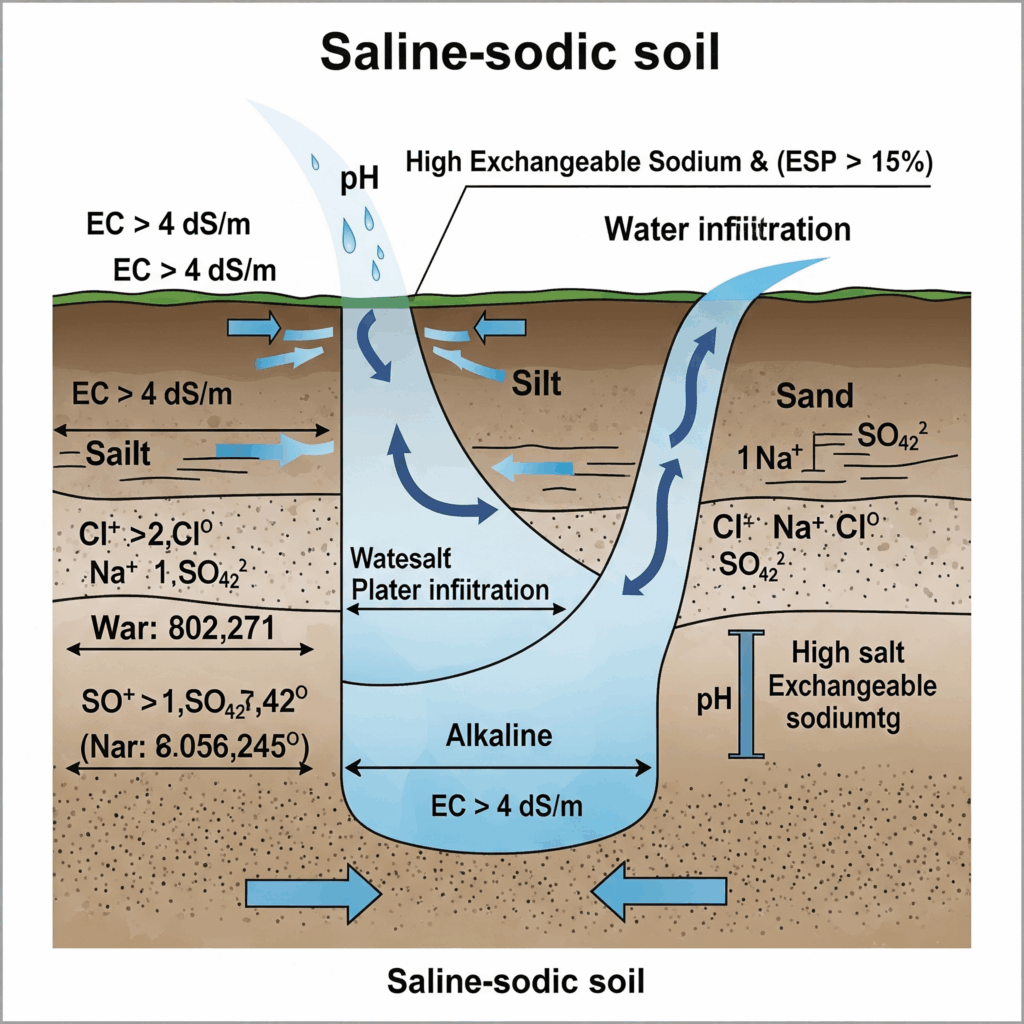
How Do Saline-Sodic Soils Form?
The genesis of saline-sodic soils involves a complex interaction of factors similar to those that give rise to saline and sodic soils:
- **Arid and semi-arid climate with sources of salts and sodium:** In regions with low precipitation and high evaporation, if parent rocks or irrigation water contain significant amounts of both soluble salts and sodium, both can accumulate in the soil.
- **Irrigation with intermediate quality water:** The use of irrigation water with a moderate concentration of salts and a relatively high proportion of sodium can lead to the accumulation of both problems over time, especially if drainage is limited.
- **Weathering processes and material transport:** The erosion and transport of sediments containing salts and sodic minerals can contribute to the formation of these soils in depositional areas.
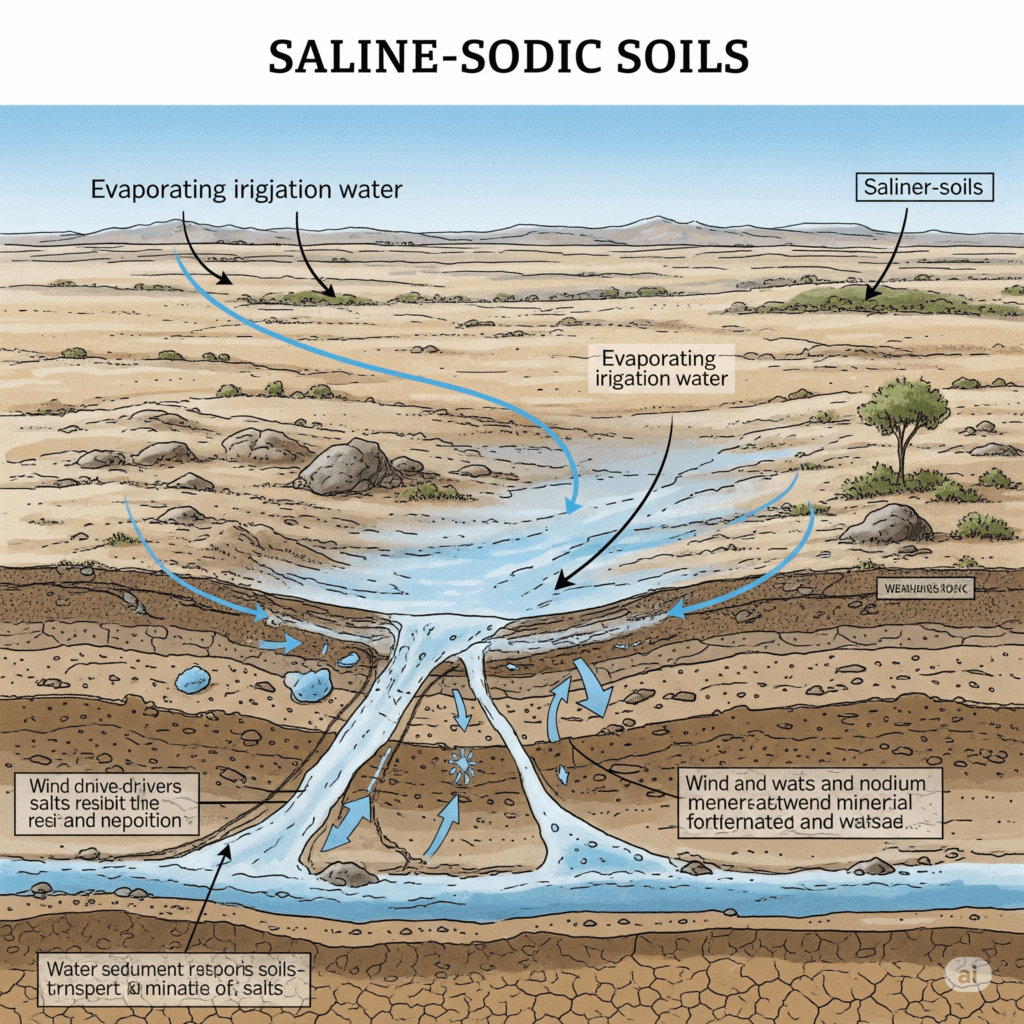
Impacts on Agriculture: The Dual Adversity
Saline-sodic soils impose a dual burden on agriculture, combining the negative effects of salinity and sodicity:
- **Osmotic stress due to high salinity:** This hinders water absorption by roots, similar to what occurs in saline soils.
- **Potential deterioration of soil structure:** While high salt concentrations can initially keep particles flocculated, a decrease in salinity (e.g., from irrigation with low-salinity water) can trigger the dispersion of clays due to high ESP, deteriorating soil structure and reducing infiltration and aeration.
- **Ionic toxicity:** The accumulation of specific salt ions can be toxic to plants.
- **Nutritional imbalances:** The presence of high concentrations of certain ions and pH can affect the availability of essential nutrients.
- **Difficulty for root development:** The combination of osmotic stress and a potentially poor soil structure makes root growth difficult.
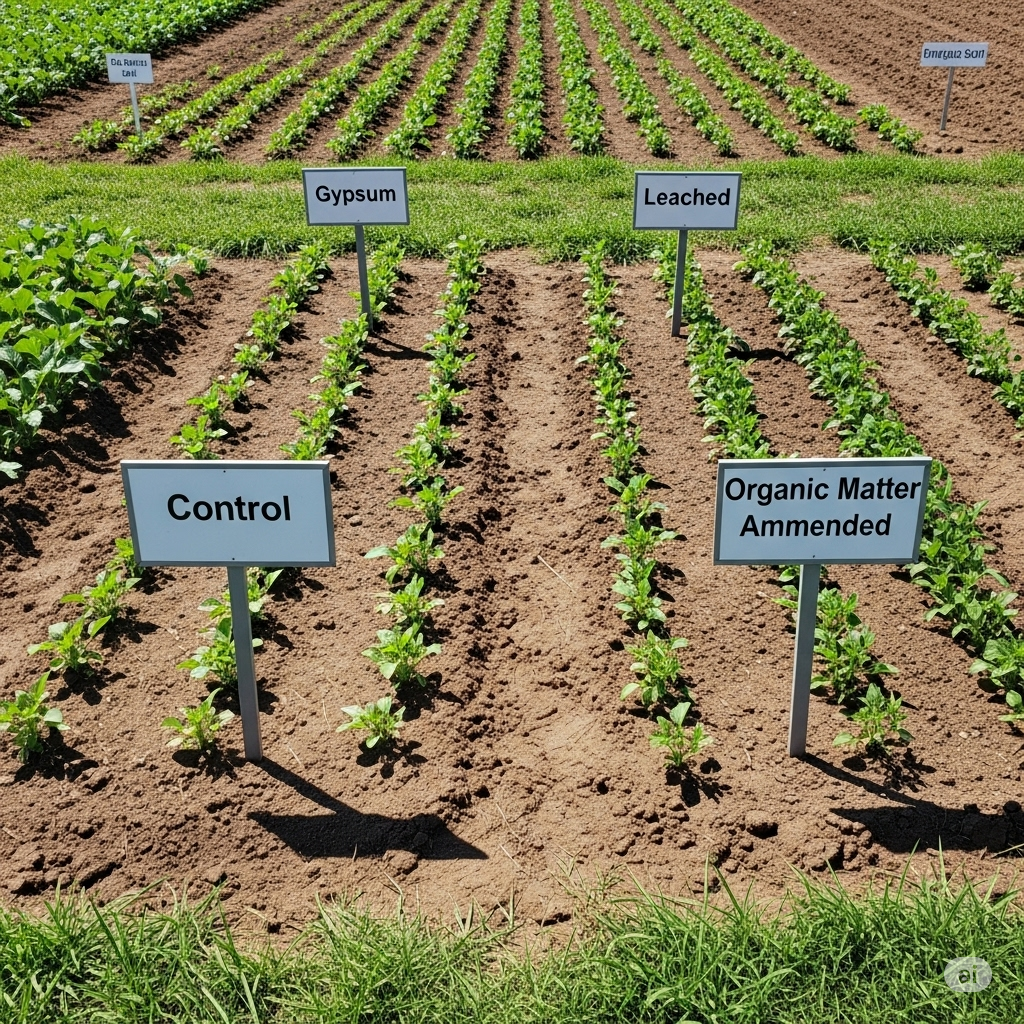
The result is often severely limited plant growth and very low or no crop yields.
Management and Reclamation of Saline-Sodic Soils
The rehabilitation of saline-sodic soils requires a sequential approach that addresses both salinity and sodicity. Common strategies include:
Improved Drainage
As with saline and sodic soils, a good drainage system is fundamental to allow the leaching of salts and displaced sodium.
Application of Gypsum ($CaSO_4 \cdot 2H_2O$)
Gypsum is crucial for replacing exchangeable sodium with calcium, which helps in the flocculation of soil particles and improves soil structure. The reaction is similar to what occurs in sodic soils:
$$ 2Na^+ – Soil + CaSO_4 \rightarrow Ca^{2+} – Soil + Na_2SO_4 $$
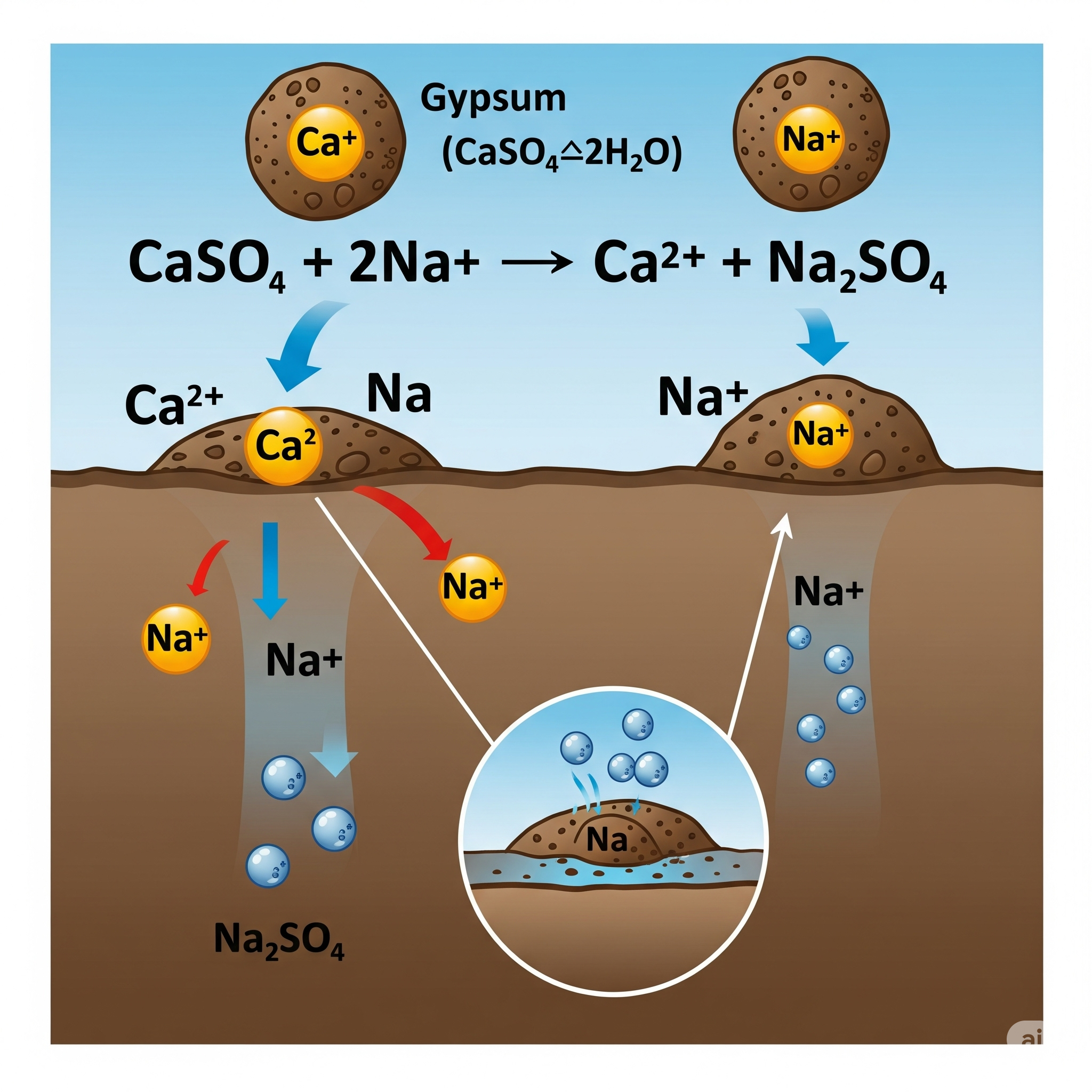
Intensive Leaching or Washing
After gypsum application, a significant amount of good quality water is required to leach the soluble salts (including the formed sodium sulfate) out of the root zone. This process may need to be repeated.
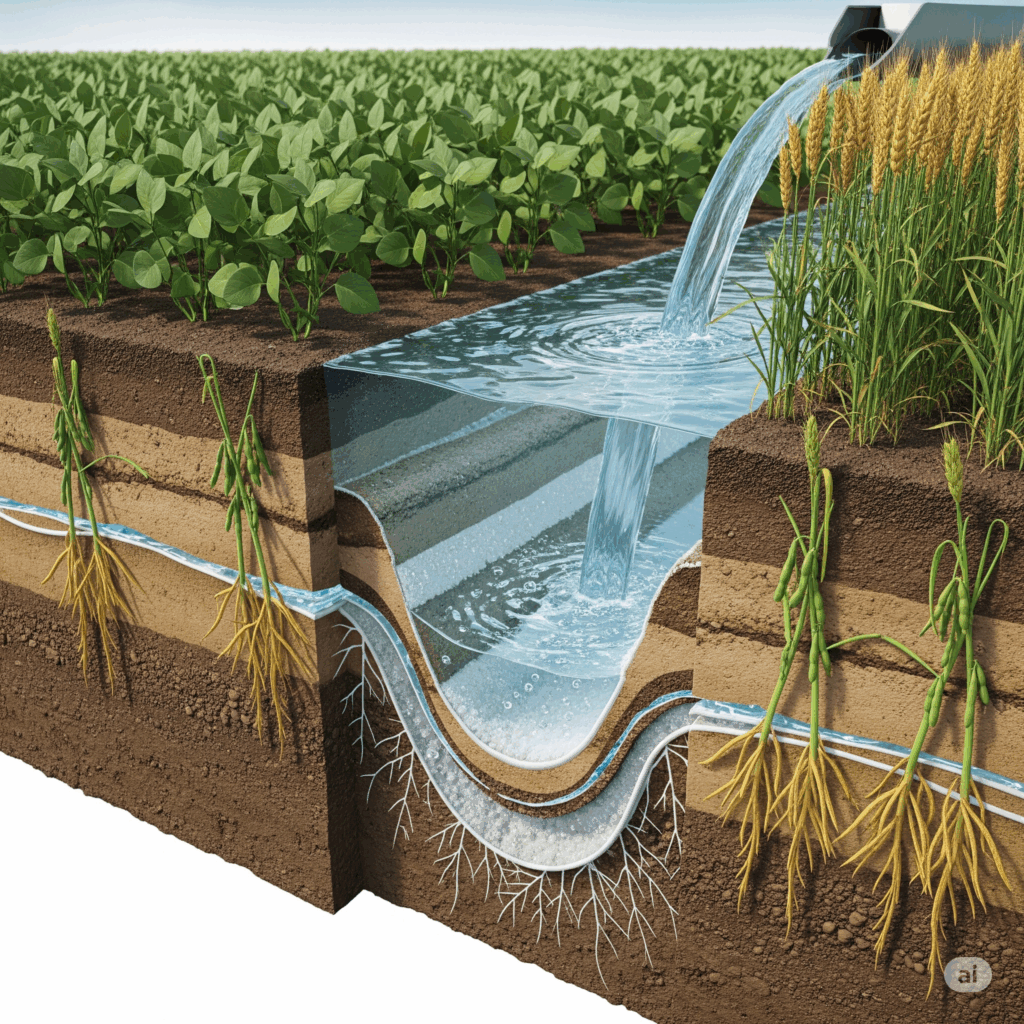
Irrigation Management with Good Quality Water
It is vital to use irrigation water with low salinity and an adequate proportion of cations (relatively high in calcium and magnesium compared to sodium) to prevent the re-accumulation of sodium and salts.
Incorporation of Organic Matter
Organic matter can improve soil structure, increase water infiltration and moisture retention, and help mitigate the adverse effects of salinity and sodicity.
Selection of Tolerant Crops
In the initial stages of recovery or in areas where complete rehabilitation is difficult, cultivating species and varieties that show some tolerance to both salinity and sodium can be an option.
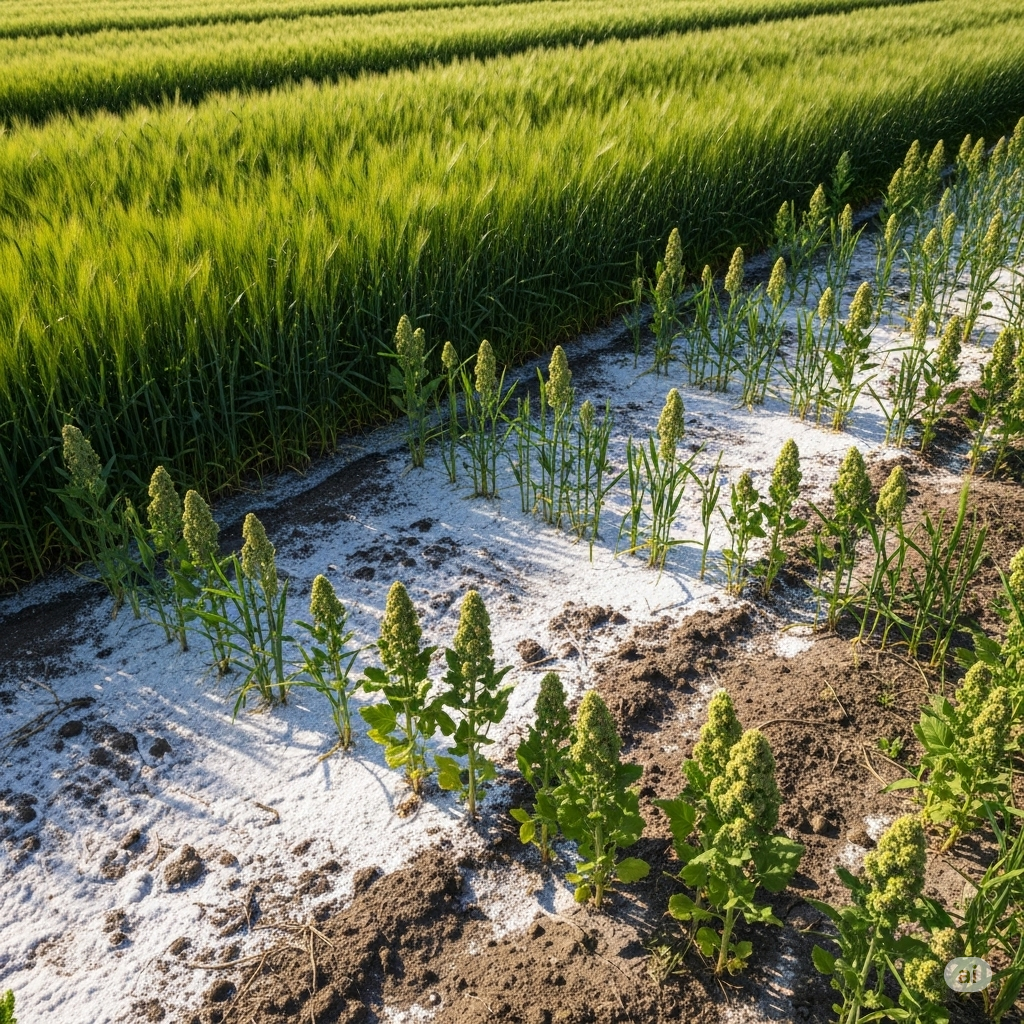
Conclusion: A Gradual Path to Recovery
The reclamation of **saline-sodic soils** is a challenging process that requires a detailed understanding of the interactions between salinity and sodicity. A gradual approach that prioritizes improved drainage, replacement of sodium with calcium, and leaching of salts is essential to restore the productivity of these soils. Patience and the consistent application of appropriate techniques are fundamental to overcoming this double obstacle and achieving sustainable agricultural use.
What specific strategies have you found useful for rehabilitating saline-sodic soils? Share your knowledge in the comments!
 AgronoBlog – Agriculture Blog
AgronoBlog – Agriculture Blog 